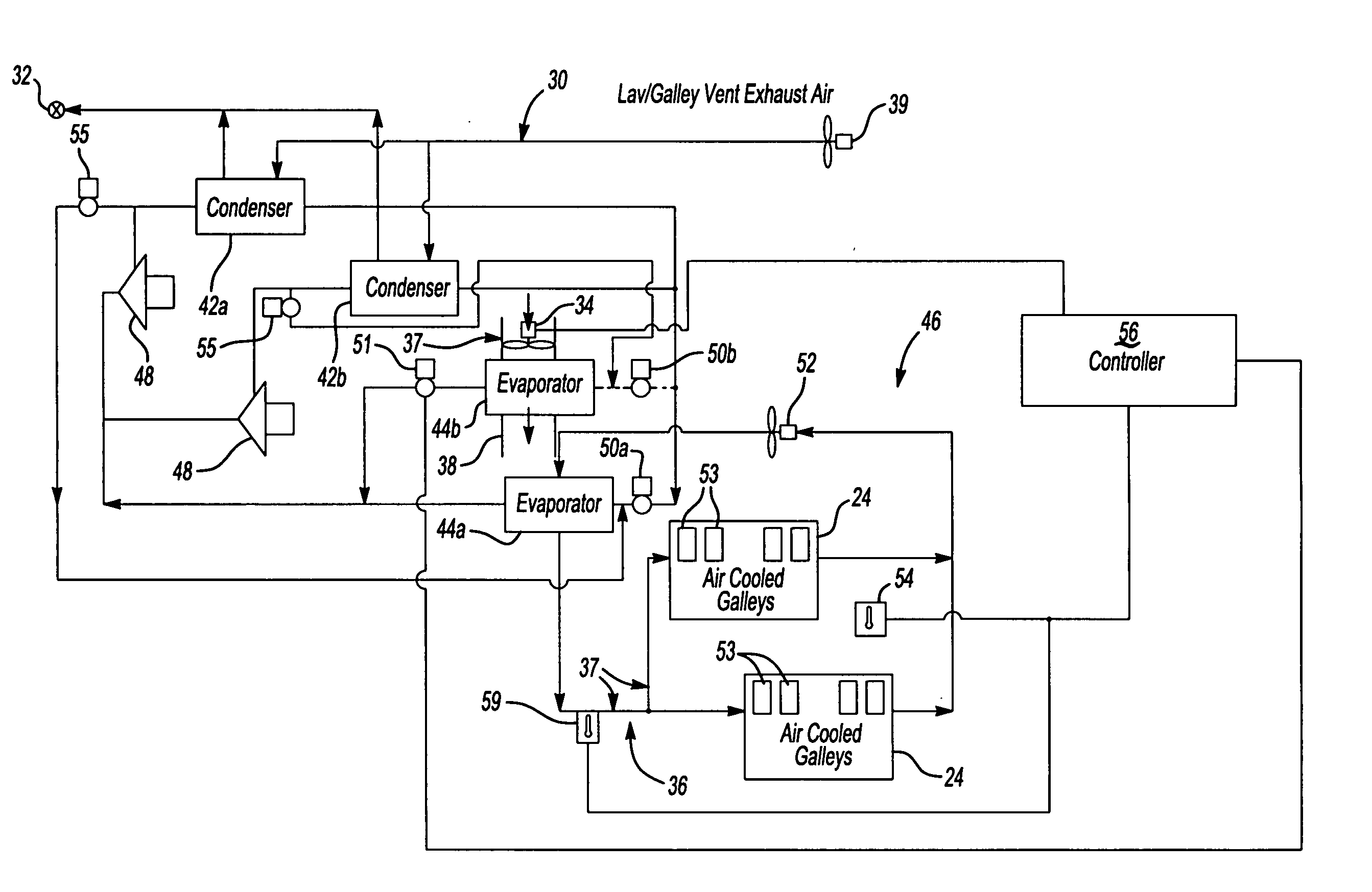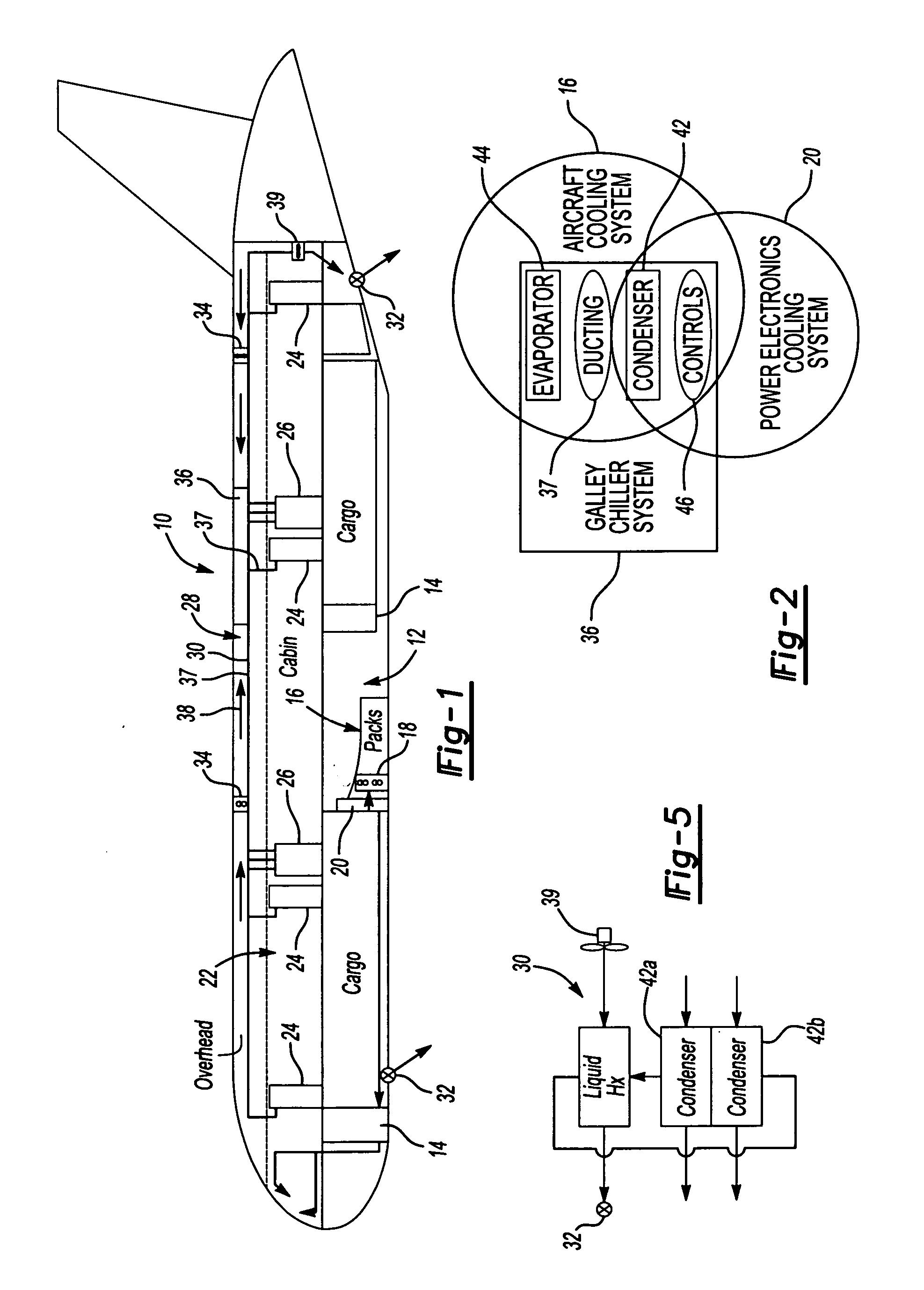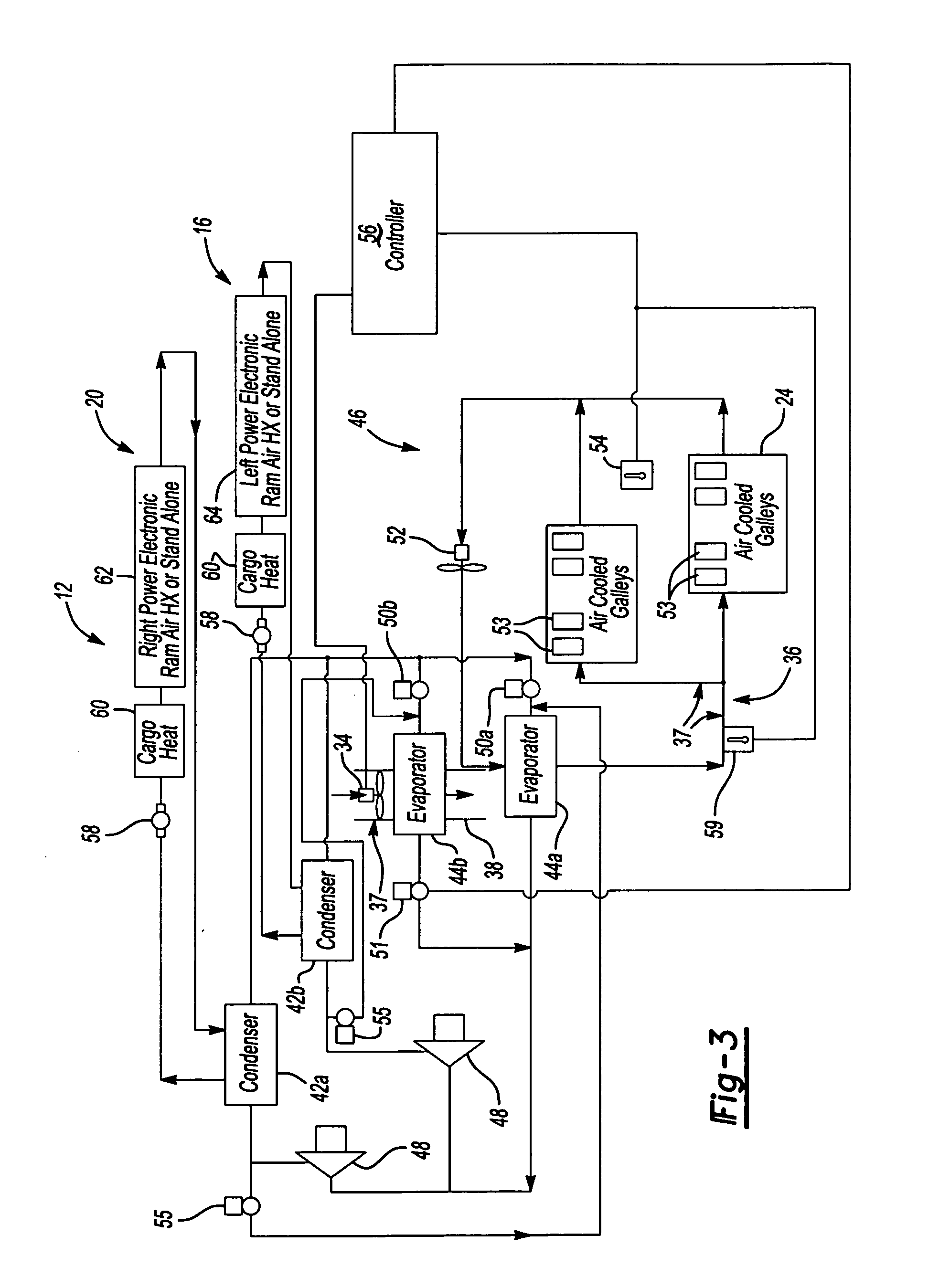Aircraft galley chiller system
a chiller system and galley chiller technology, which is applied in the direction of compression machines with several condensers, light and heating equipment, transportation and packaging, etc., can solve the problems of increasing the load on the aircraft cooling system, and inefficiency in the context of the aircraft's overall cooling system, so as to reduce the requirements of other cooling systems
- Summary
- Abstract
- Description
- Claims
- Application Information
AI Technical Summary
Benefits of technology
Problems solved by technology
Method used
Image
Examples
Embodiment Construction
[0017] A high level schematic cross-sectional view of a commercial aircraft 10 is shown in FIG. 1. The aircraft 10 includes a cargo area 12 within the lower portion of the aircraft 10. The cargo area 12 may include one or more power electronics power bays 14 housing various electronic components used in the control and operation of the aircraft 10. An aircraft cooling system 16 includes one or more air conditioning packs typically located within the cargo area 12. The aircraft cooling system 16 provides temperature conditioned air to a cabin area 22 to provide a comfortable climate for the passengers within the cabin area 22. A power electronics cooling system 20 may also be located within the cargo area 12 to cool the power electronics equipment bay 14.
[0018] Galleys 24 are positioned in various convenient locations within the cabin area 22. The galleys 24 house multiple galley carts containing food and other perishable goods. The galleys 24 typically include ducting that delivers...
PUM
 Login to View More
Login to View More Abstract
Description
Claims
Application Information
 Login to View More
Login to View More - R&D
- Intellectual Property
- Life Sciences
- Materials
- Tech Scout
- Unparalleled Data Quality
- Higher Quality Content
- 60% Fewer Hallucinations
Browse by: Latest US Patents, China's latest patents, Technical Efficacy Thesaurus, Application Domain, Technology Topic, Popular Technical Reports.
© 2025 PatSnap. All rights reserved.Legal|Privacy policy|Modern Slavery Act Transparency Statement|Sitemap|About US| Contact US: help@patsnap.com



